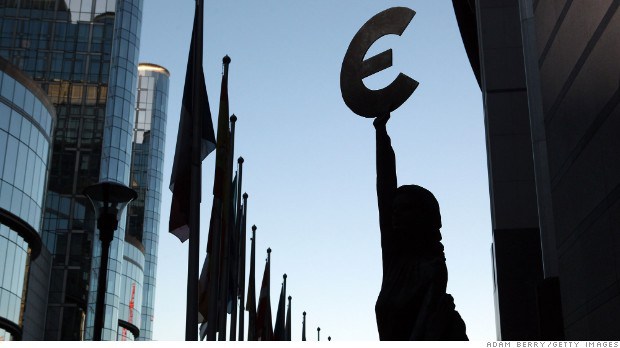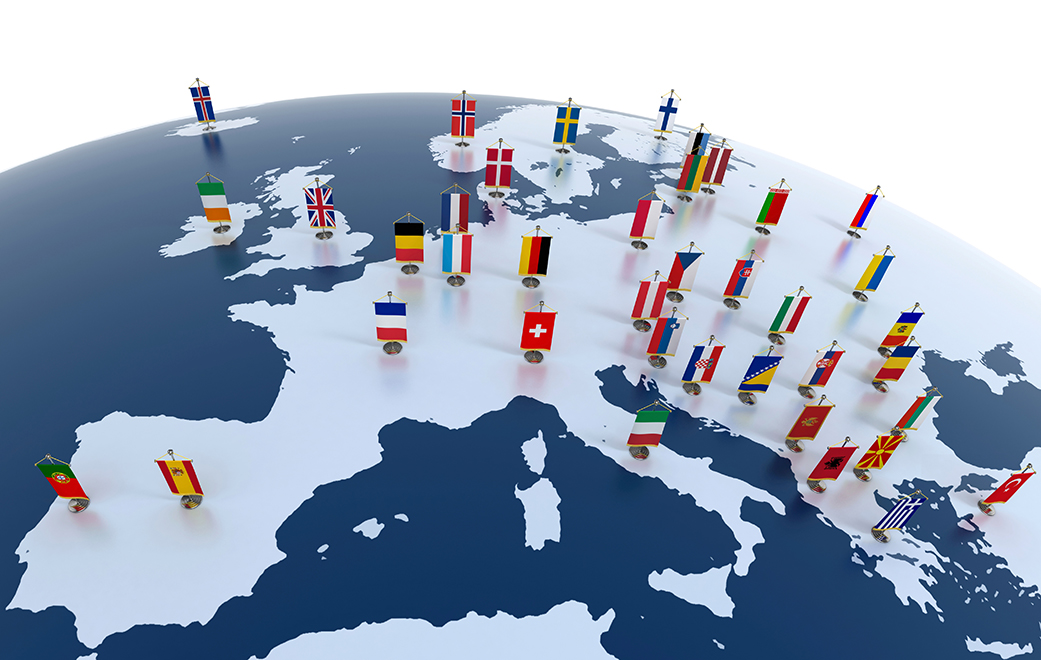

The latest economic growth figures from the European Union confirm that most of its member nations are struggling. It’s time to make some tough, painful choices.
FORTUNE — For the past year, we’ve been hearing that global growth, and the world’s equity markets, will get a major lift from a gradual recovery in Europe.
Indeed, Ireland and Portugal recently returned to the debt markets with well-received offerings, and the Greek government claims it will soon be in a position to issue bonds. Yields on sovereign debt remain remarkably low and stable. It’s indisputable that a mood of tranquility has returned to the eurozone.
But tranquility is not the same thing as progress, as the GDP figures released on May 15 by the Statistical Office of The European Union (Eurostat) alarmingly demonstrate. The 18-nation eurozone expanded by just 0.2% in the first quarter of 2014, half the figure economists were projecting.
Germany, as usual, was the leader, posting a gain of 0.8%. The problem spots are precisely the places where the comeback is supposedly underway: the beleaguered nations of Europe’s southern tier, as well as that tamed tiger, Ireland.
The latest figures confirm that most of these countries aren’t improving at all. Italy’s economy shrank by 0.1% in the first three months of 2014, matching the average of the three previous quarters. After expanding 0.6% in Q2 2013, France recorded zero growth. Portugal shrank 0.7%, following positive numbers in the preceding nine months. While figures weren’t available for Greece and Ireland in Q1, neither country is showing progress. Greek GDP dropped 2.5% in the final three months of last year, and Ireland limped ahead at 0.2%.
The lone nation demonstrating a sustained upward trend, however modest, is Spain. It grew at 0.4% in the first quarter of 2014 after pretty much flatlining for the last nine months of 2013.
Harald Uhlig, a German-born and educated economist at the University of Chicago, provides a balanced view of the current risks to the eurozone. For Uhlig, it’s crucial to understand the divergent courses taken by Germany and the southern nations since the euro’s introduction in 1999, and how those policies have led to the disparate economic outcomes in these nations today. “Inflation had always been a big problem in southern Europe,” he says. “Rates were high, and they also carried a big ‘risk premium’ because you couldn’t be sure that the separate central banks wouldn’t do something crazy, causing more inflation.”
The institution of a single currency in Europe led to the creation of a Bundesbank-like European Central Bank that then and now sets monetary policy in a rigorous, predictable fashion. “Rates dropped, and government and consumer spending exploded, driving high growth rates,” says Uhlig. What’s often overlooked, he notes, is that Germany didn’t join the party. “Germany was the ‘sick man’ of Europe. It suffered when the euro was introduced, in contrast to the southern countries.” Germany posted miserable GDP numbers in the early 2000s, while Ireland, Greece, and Spain all roared ahead.
Then, Germany made a turn that, in retrospect, seems astounding. Chancellor Gerhard Schröder (who served from 1998 to 2005) championed reforms designed to create a far more flexible labor market. “His model was the U.S.,” says Uhlig. “Before that, I kept hearing from leaders in Germany who didn’t want to reform, [saying] what you hear now in southern Europe: ‘If we only have more growth in the next five years, we’ll get rid of the unemployment problem.’ But growth never came.”
Schröder decisively lowered pension costs and unemployment compensation, and he gave companies more flexibility with hiring and layoffs. Schröder paid a heavy price for securing the most dramatic labor market reforms in modern European history. “He should have been rewarded, but he was brutally punished,” says Uhlig.
Schröder lost the chancellorship to Angela Merkel in 2005. The fruits of his reforms didn’t surface until around 2006, when the German economy emerged as the strongest player in Europe, as demonstrated by its resurgence from the financial crisis.
Big spending inflated wages in southern Europe, and productivity gains couldn’t keep up, meaning labor costs in Spain and France for each unit of autos or steel produced grew at a faster rate than in Germany or the U.S. The crash exposed the competitiveness gap in southern Europe and Ireland. Global customers bought less and less of pricey exports from southern Europe.
So, what can these nations do now? “It can be solved in one of two ways,” says Uhlig. “One is exiting the euro so that costs decline in the new currency compared to costs in other nations. The other is a combination of productivity gains and labor cost reductions. That would be the far better course.”
The issue, he says, is that the troubled nations have done little to unshackle labor markets along the lines of Schröder’s reforms of a decade ago.
Uhlig is especially concerned about the deterioration in France. “Europe used to have two great stabilizers, France and Germany. Now it has one. In France, the retirement age is too low, and companies are often run by former government figures and are too politically connected, so that it’s difficult for entrepreneurs to challenge entrenched companies.” He worries that the future of the eurozone is increasingly “on the shoulders of just one stabilizer, Germany.”
The severe recession and high jobless rates have not done nearly enough to lower labor costs. “I keep hearing from colleagues that labor costs have come way down in Spain,” he says. “But they’re still too high. The southern countries haven’t solved the problem of letting wage costs run far ahead of gains in productivity.”
Uhlig also notes that Europe’s period of economic calm hasn’t been put to good use. “It hasn’t been used for the types of reforms that are needed,” says Uhlig. “The attitude is, the euro-crisis is over, yields are still fairly low, and we don’t have to do anything.”
Uhlig is particularly concerned with potential triggers that might undermine confidence in the credit markets. “If Greece defaults, it could set off a contagion that would raise rates for the other nations, causing more defaults and a possible exit from the euro.” Uhlig would much prefer that the euro stay in place, and the problem be addressed by the Schröder method. Unfortunately, he says, the Schröder experience haunts Europe’s current leaders. “They fear they’ll end up like Schröder and the Social Democrats,” he says.
Southern Europe may have missed its chance. The best time to reform was when times were flush in the mid-2000s. It’s far more difficult to undo regulations and restrictions imposed over decades when economies are stalled and budgets are stretched to the limit, making a fiscal spending jolt highly risky.
Europe’s leaders keep careening from one “solution” to another, fixating on the German elections, then on asset quality reviews for banks, then on huge monetary stimulus programs to prevent potential deflation. They’re missing what really needs to be done. If Europe doesn’t make some tough decisions, the market will make choices for them. That would deliver a giant, cracking sound heard round the world.
By Shawn Tully
source: CNN Money
































